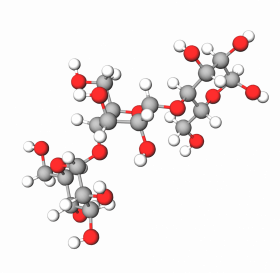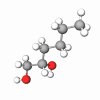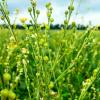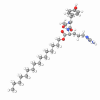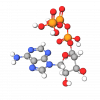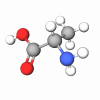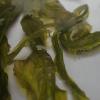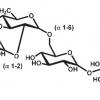Maltodextrin is a generalized name for polysaccharides composed of short-to-medium long chains of glucose units (from 3 to 20 units, linked primarily by α-1–4 bonds) produced from starch. Any starch can be used for its production - in the US, it is usually made from corn or potato; in Asia, the raw material is rice; and in Europe, wheat or barley. So, maltodextrins are linear oligosaccharides obtained from malt hydrolysis catalyzed by the enzymes β-glucosidase so that they can be considered biotechnological products from plant raw materials.
Production
The production process is relatively simple. It is made from the starch in the presence of acids and/or enzymes in a hydrolysis process (fragmentation), similar to how starch is broken down during digestion. Then, long chain polysaccharides from starch are divided into smaller parts called dextrins using acidic hydrolysis or microbial enzymatic degradation using yeast or bacteria (e.g., Bacillus macerans). Both methods provide the same result, long molecules of glucose polymers divided into smaller parts. If produced dextrins are small enough, 3 to 20 units (depending on the breakdown level), the resulting product is called maltodextrin, a white powder or a concentrated solution.
Uses
Maltodextrin is a common food, pharmaceutical, and skincare ingredient. It is used as a sweetener (shorter chain dextrins are slightly sweet; longer have a neutral taste), a thickening agent, or filler in the food industry. In addition, thanks to its non-toxicity and relatively low price, it is used as a binding agent for vitamins and biologically active substances in pharmacology.
Uses in skincare
For skincare formulations, maltodextrin is a multifunctional ingredient. Like liposomes, it can be used as a coating agent that protects unstable ingredients from UV light and other influences, encapsulating like an envelope. In addition, coating with maltodextrin improves penetration levels and the formula's effectiveness.
Thanks to multiple hydroxy groups "capturing" water molecules, polysaccharides are very hydrophile and enhance the skin's water-binding ability and hydration levels. Maltodextrin also acts as a natural moisturizer, optimally hydrating and reducing transdermal water loss.
Apart from the considerable moisturizing property typical of sugar molecules, maltodextrins protect the active principle, improving stability. In particular, the enzymes complexed with maltodextrins maintain longer their activity once included in the finished cosmetic, making it possible to take maximum advantage of their properties.
It also acts as a skin's microbiota-balancing ingredient. Usually, harmful microbes are unable to destruct maltodextrin into glucose, but neutral and beneficial microflora can metabolize it, which improves microbial balance. In addition, glucose is a perfect "fuel" for skin cells and a building block for GAGs (e.g., hyaluronic acid - HA), so it can be a natural energizer.Maltodextrin is also helpful for viscosity control and sensory profile of formulations, improving texture, consistency, and stabilizing emulsions. In addition, it is a potent soothing agent for aggressive formulas containing high AHA concentrations or other irritants.
